Melasma Treatment To Reduce Dark or Grey Patches On Skin
Visibly reduce the appearance of dark or grey patches on skin with the best treatment for melasma at OVO Medi Spa. Clinically proven results that last.

Key Benefits For
Melasma Treatment
Clinically proven and professional skin treatment products
We have effective treatment for melasma to target and slow down pigment production to improve the look and size of affected areas. Our melasma treatment plan is designed to help you achieve an even skin tone using specially formulated and clinically proven products tailored to your skin.
Maintenance therapy to prevent melasma from returning
Our team of professional doctors and aestheticians are trained to provide a personalized treatment plan to help melasma from coming back. From using clinically proven products to lifestyle changes, a recommendation will be made to maintain and prevent melasma after it's been treated.
Effective treatment for melasma for lasting results
There are different melasma treatment options OVO Medi Spa specializes in to manage and combat melasma. The most effective treatment for melasma is micro-needling with anti-melanin serum, facial peels, Pharmaceutical grade skin care products, and laser Q-Switch treatment.
4 Types Of Melasma
Treatment
Micro-needling with Anti-Melanin Serum
Micro-needling is a proven melasma treatment when used with anti-melanin serum. Tiny needles prick the skin to allow the serum to penetrate deeper into the affected skin to reduce melanin production and break down pigmented patches. The procedure is minimally invasive and requires no downtime.
Pharmaceutical grade skincare products
Medical grade skincare is sold under physician supervision and contain active ingredients to reduce melanin production, speed up cellular turnover, and improve skin tone. To be the best treatment for melasma, it's important to be consistent with the application and to monitor the progress.
Laser Q-Switch Treatment
This laser is FDA-approved for melasma treatment by gently reducing the pigmented patches and brighten skin through multiple treatments. A certified laser aesthetician will be able to distinguish melasma from regular sun damage and recommend laser treatments instead of IPL treatments.
Facial peels
A chemical peel can reduce skin pigmentation, brighten the complexion, and improve the appearance of skin as an effective melasma treatment. Facial peels use chemical-based products to eliminate damaged skin cells. By stimulating new collagen growth, the result is smoother, healthier skin.
The Most Advanced
Q-Switched Technology
Global Aesthetics Industry Award for best-made laser
Fotana is a global developer of laser technology offering solutions to stubborn skin conditions such as melasma. Decades of experience have produced an innovative multi-wavelength and high-performance laser light that eliminates complex pigmentation without ablating the skin.
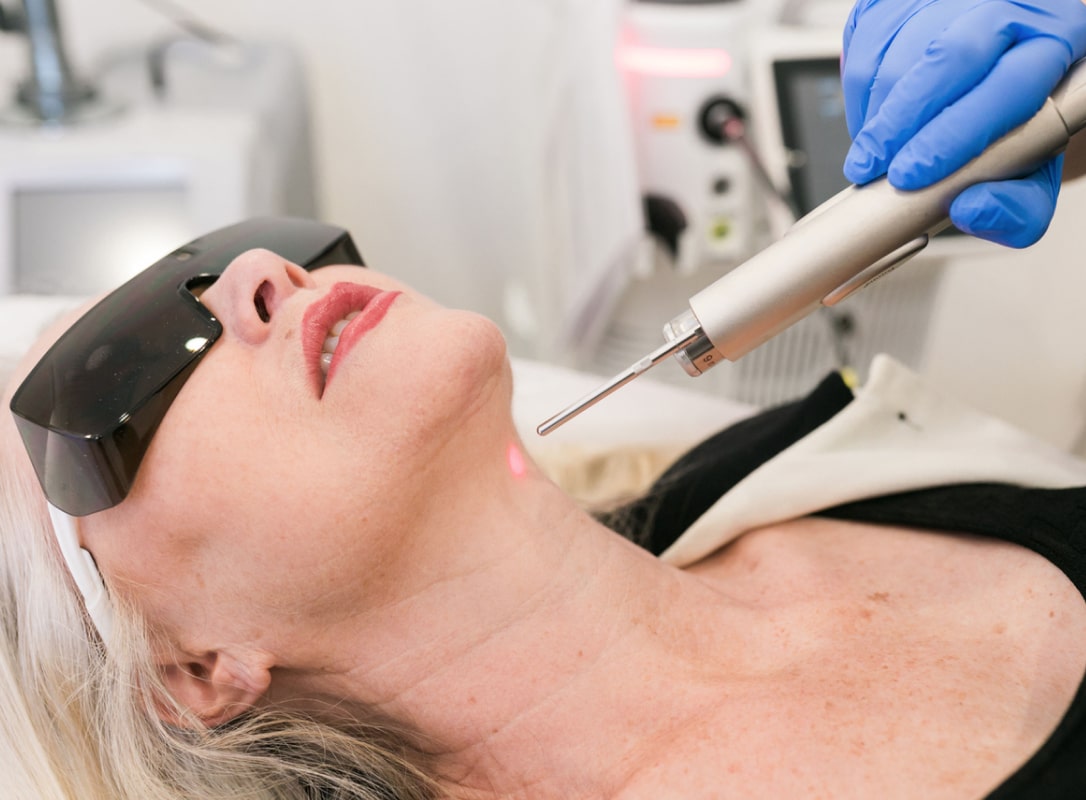
Gentle, powerful, and effective laser treatment
The Q-switch laser uses four wavelengths to target and break down pigments, making the procedure a safe and effective treatment against melasma. It can also remove sun-damaged spots, freckles, and enlarged pores. The procedure is minimally invasive and ideal for all ethnic skin types.
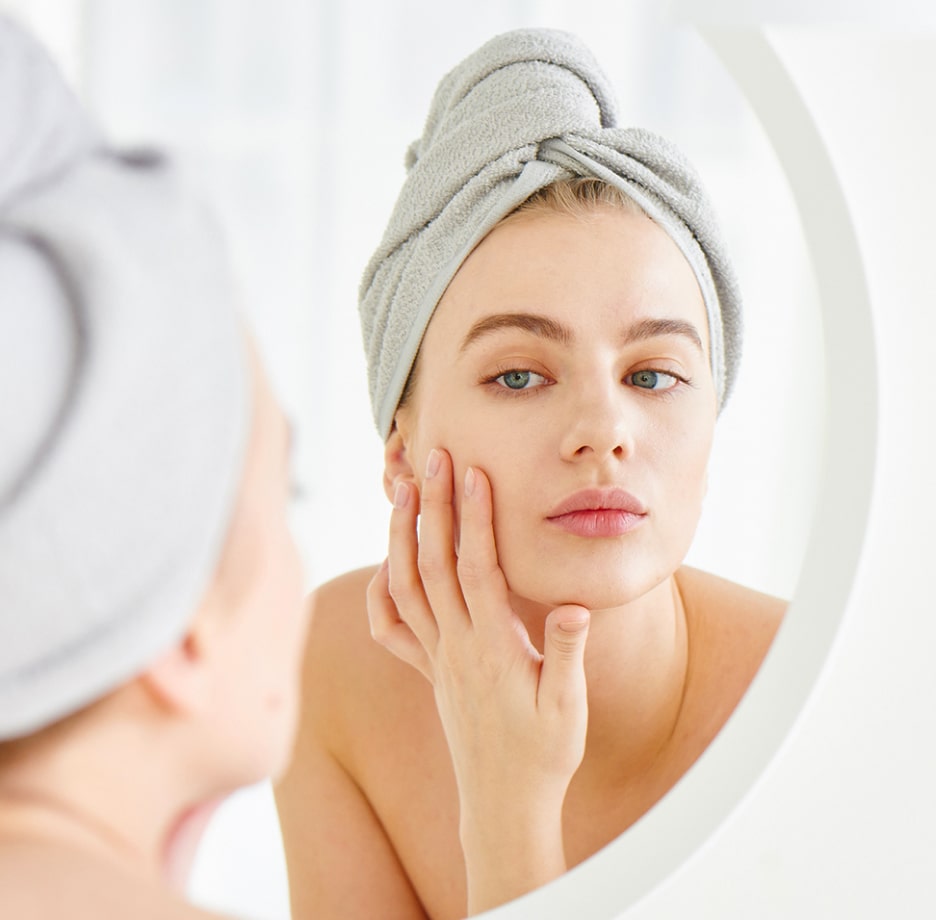
How does the laser treatment work
Melasma laser treatment works by detroying melanin pigment without ablation in 3 steps: Light Absorption, Pigment Break-up, and Pigment Removal. Short nanosecond pulses of light and photoacoutistic waves break pigment into smaller particles where it's removed by the body's immune system.
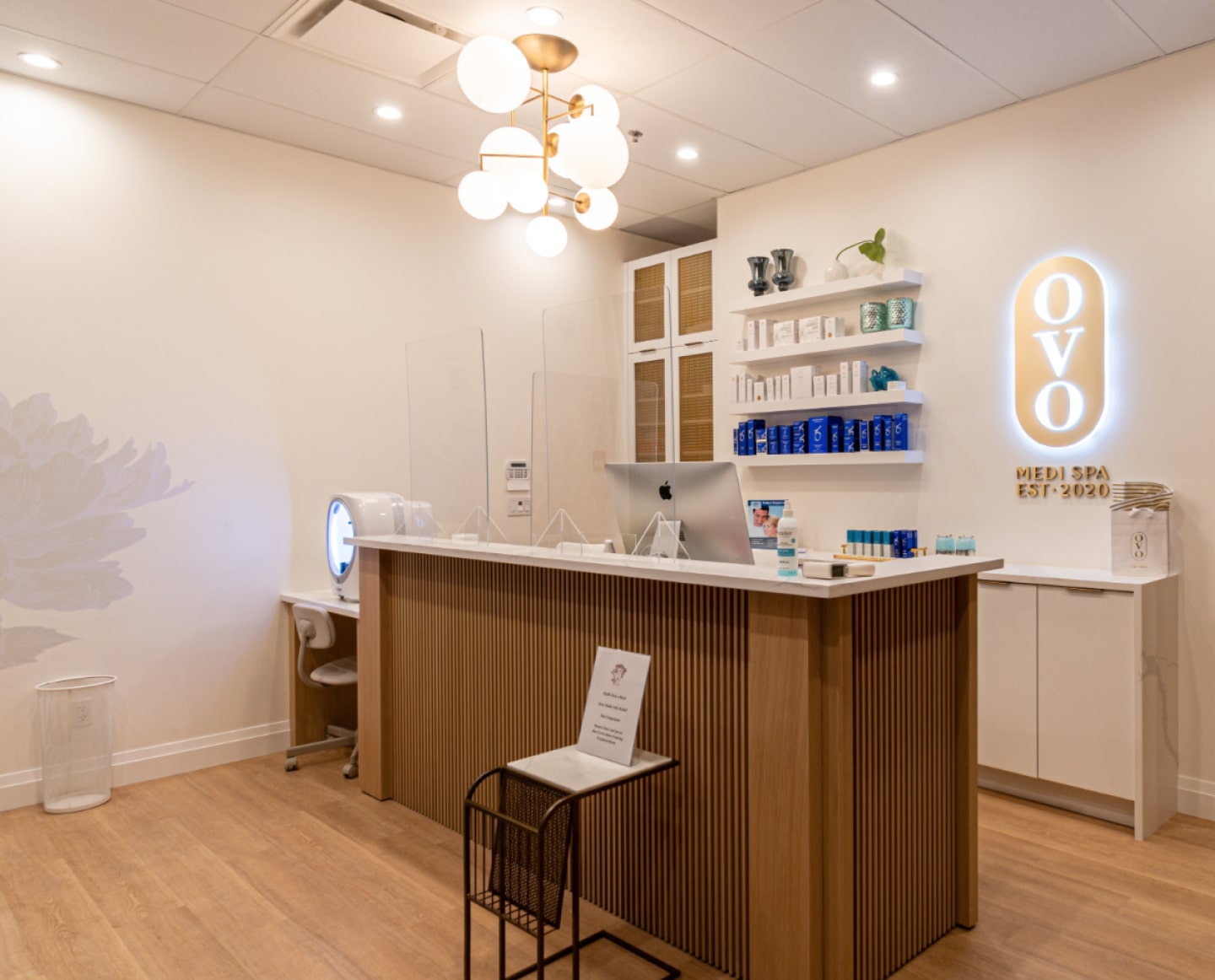
For Consultation.
Do You Have Any Questions About Treatments? Our team will contact you to set up a complimentary consultation.
Call us 604.568.8800 orEmail to Service@OvoMediSpa.com

Why Our Clients Are Happy With Us
Highly trained professionals & advanced technology
OVO Medi Spa is committed to addressing all types of skin concerns and cosmetic procedures to help you look and feel your best. Medical and aesthetic treatments are performed by knowledgeable professionals using medical-grade products, technology, and techniques for effective results.
See OVO TreatmentsWhat Our Customers Say About Us




What Triggers Melasma?
Melasma is more likely to occur in people of color. The color-making cells called melanocytes create too much color resulting in dark or grey spots. Common triggers may increase the chance of melasma such as sun exposure, change in hormones, medications, excessive heat, or skincare products.
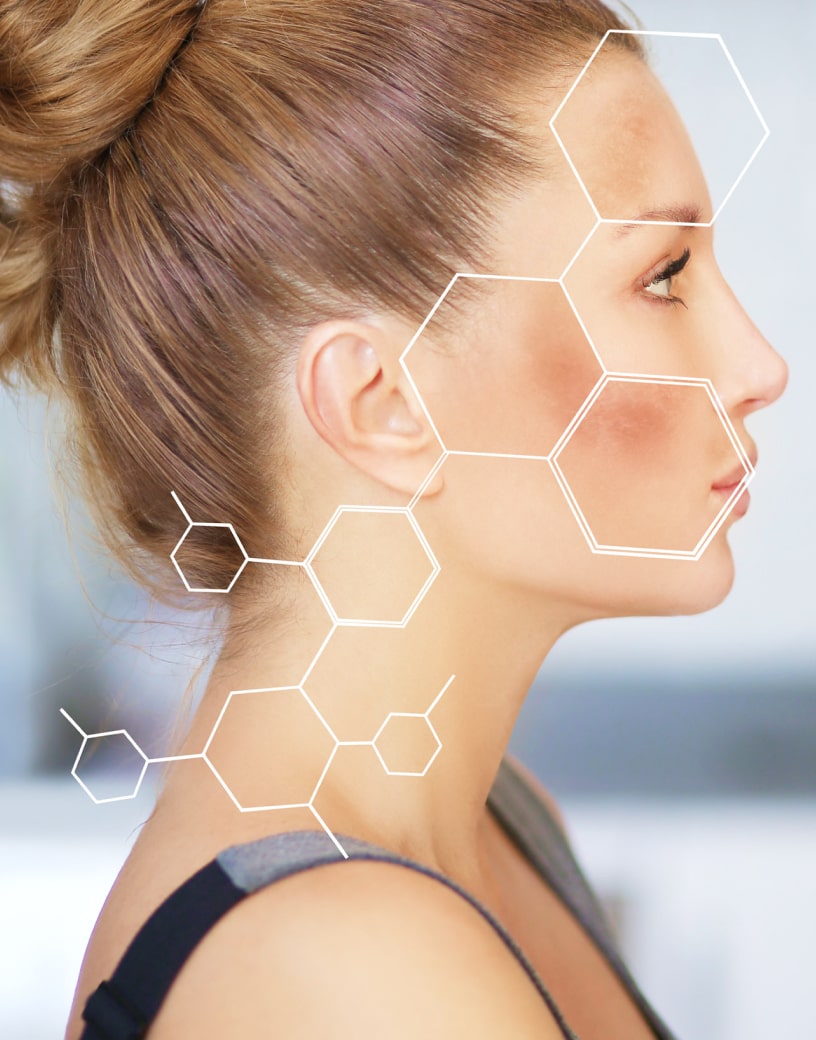
Frequently Asked Questions
There is no definitive answer on what exactly causes
melasma. Anyone can get melasma but they are more common
in women and dark-skinned individuals. Spending too much
time under the sun too long or too often might increase
the risks of developing melasma because UV rays can
affect the cells which control pigment. It is also
common in people with tropical climates.
It is usually linked to female hormones estrogen and
progesterone. You might have a higher risk of having or
developing melasma if you are a female taking birth
control pills, taking hormone replacement therapy, or if
you are pregnant. Some women develop melasma during
their second or third trimester.
Here are other possible causes of melasma:
- Taking anti seizure medications
- Taking Estrogen or Diethylstilbestrol
- Having hypothyroidism
- Too much exposure to LED screens such as cellphones, laptops, televisions, and tablets.
- Makeups or cosmetics
- Taking phototoxic drugs
- Using some scented soaps
- Tanning beds
- Using skin care products that irritate your skin
- Hormones
- Genetics
Melasma is more common in women than men. 10% of people
with melasma are men, the rest are women. Women are more
susceptible to melasma because of the hormones estrogen
and progesterone. If you are taking birth control pills,
hormone replacement therapy, or pregnant, you will have
a higher chance of developing melasma.
People with darker skin such as Asians, Indian,
Latin/Hispanic, North African, African-American, Middle
Eastern, or Mediterranean descent are more likely to get
melasma compared to those with fair skin. If you spend a
lot of time in front of your LED televisions,
cellphones, laptops, and tablets, you will have a higher
risk of developing melasma.
When you spend too much time under the sun often, the
risk of developing melasma will be higher.
It depends. There are chances that melasma might go away
on its own. If the melasma is caused by fluctuating
hormones because of pregnancy or if you are taking
hormone-based medications or contraceptive pills, there
is a good chance the melasma will fade when your
hormones return back to normal. You need to wait for a
few months for this to happen.
However, if your melasma is not caused by contraceptive
pills, pregnancy, or hormone-based medication, the skin
discoloration might not go away from its own. Melasma
patches might last for years and be impossible or
difficult to treat on your own. Home remedies are not
always that effective. In these cases, it is best to
consult an experienced doctor.
Call us at
604-568-8800
and have them check your melasma spots or patches. We
will ask you a couple of questions to help identify the
cause of the discoloration. Then your doctor will give
you a couple of treatments you can undergo to help even
out your skin color.
Yes, there are home remedies to help you treat your melasma at home. Here are some of them:
- Aloe vera: You can use natural or store-bought aloe vera gel to do this. This plant is known for it being one of the most effective moisturizing and deeply hydrating ingredients but gentle to the skin. It also has anti-inflammatory properties. Aloe vera works by rehydrating and nourishing the dry skin deeply and helps protect the skin against the effects of UV exposure.
- Turmeric: This ingredient is famous for its antioxidant, antimutagenic, and anti-inflammatory properties. Just like aloe vera, it helps protect your skin against UV exposure and prevents melanin products in the skin. Curcumin, the primary compound in turmeric, is also famous for helping reduce hyperpigmentation. You can combine turmeric with gram flour and milk for better results.
- Orchid extract: It is one of the primary ingredients used in many Korean skincare products. The orchid extract helps relieve hyperpigmentation caused by melasma. However, it will not completely heal the hyperpigmentation, it will just reduce its size and tone the complexion of the skin.
Additional: Always wear sun protection. UV exposure is one of the primary causes of melasma. Use a wide spectrum sunscreen every day. If you are going out, wear wide brim hats to help cover your face.
Melasma might fade away on its own. However, that is not always the case. There are many topical treatments you can choose that use tyrosinase inhibitors that stop the formation of melanins and help prevent new pigmentation. These treatments include:
- Hydroquinone: This is usually the first treatment for treating melasma. Hydroquinone is applied directly to the skin and helps even out your skin tone. It usually is in the form of cream or lotion. For best results, use it at night for two to four months.
- Azelaic acid or kojic acid: Your dermatologist might also prescribe using creams, lotions, or gels with azelaic or kojic acids. Apply them twice a day for better results. This is safe for pregnant women.
The best way to know which treatment works best for your melasma is to ask us. This way, they will be able to properly diagnose and check the state of your melasma before advising you which treatment can work for you.
Both hyperpigmentation and melasma are common. When you
see dark spots in your skin, it can be hard to tell
which is melasma and which is hyperpigmentation.
Hyperpigmentation is the term used to cover many
conditions where some parts or patches in your skin
become darker compared to the surrounding skin which is
usually lighter. There are different types of
hyperpigmentation such as medications, acne scarring, or
inflammation. However, the most common cause of
hyperpigmentation is sun exposure. The UV rays can
damage the skin. Some of the effects of too much
exposure to the sun are freckles, melasma, liver spots,
or in more severe cases, skin cancer. These conditions
fall under hyperpigmentation.
Melasma is a specific type of hyperpigmentation. What
sets melasma apart from other types of hyperpigmentation
is the cause. The most common cause of melasma is the
hormonal changes in the body unlike other types of
hyperpigmentation caused by sun exposure. It is
sometimes called "the mask of pregnancy" because
pregnant women are more likely to get melasma with the
hormonal changes that happen in their bodies. Melasma
usually shows in the face, cheeks, chin, nose, upper
lip, or other cranial areas. It can also be found in the
shoulders or parts that are prone to sun exposure.
In treating melasma, the first thing you need to do is
prevent it from spreading or getting worse. You can do
this by limiting your sun exposure, using tanning beds,
LED screens, irritating soaps, and taking medications
like birth control pills and hormones.
Always make sure to wear sunscreen. Choose a sunscreen
that offers broad-spectrum protection with at least a
Sun Protection Factor (SPF) of 30 or more. It should
also contain zinc oxide and/or titanium dioxide to help
limit the effects of the UV rays on your skin. For best
results, apply sunscreen 15 minutes before going out.
Reapply sunscreen every 2 hours.
Most importantly, choose your skin care products
carefully. Always go for gentle ones. If its stings or
burns your skin, do not use them again because it will
cause irritation and might worsen your melasma.
Lastly, avoid waxing the areas affected by melasma. It
will cause inflammation and worsen your melasma. If you
are keen on removing hair in parts affected by melasma,
consult your dermatologist for other possible hair
removal treatments you can do.
If topical treatments are not helping you, it is best to consult your dermatologist for other treatments you can do to help your melasma. Here are the most common melasma treatments and procedures:
- Facial peels: Also called chemical peels, they can effectively remove and peel off the top layer of your skin to reduce skin pigmentation. After undergoing this treatment, you will have even, brighter, and fresher skin. It can be combined with laser treatment to speed up the clearance of pigments. Facial peels are also a great alternative for clients who can't undergo laser treatment.
- Laser Q-Switch treatment: The special laser used for this treatment is FDA approved especially for treating melasma. Only a certified and experienced laser aesthetician can use this device. It is specially made to gently remove the pigmented patches in your skin. However, you will need to undergo multiple treatments to completely remove all pigmented patches.
- Micro-needling with anti-melanin serum: A numbing cream will be applied to the affected area. Small tiny needles are used to open up the micro-channels in tissue. Then, an anti-melanin serum is applied. By opening up all the micro-channels in the affected tissue, the serum will be able to penetrate better and deeper into the skin. The serum contains various ingredients which help reduce melanin production.
- Pharmaceutical grade skin care products: Using the right products can help treat melasma. Choose skin care products that contain active ingredients to help reduce the melanin production in your skin, speed up cellular turnover, and even up your skin tone. If the product leaves a burning sensation, replace the product you are using.
Yes, laser treatments are 100% safe for treating
melasma. However, this treatment cannot be used on all
people. It is best to consult with your trusted doctor
to have your skin checked. They will be able to identify
if laser treatment works best for your condition and
which type of laser or other treatments you can do to
help with your melasma.
There are 3 types of laser that can be used for this
treatment, namely:
- IPL
- Fractional
- Q-Switch
All these 3 types of laser are safe. Ask your doctor
which one best fits your needs and skin condition.
Laser treatments are ideal for those people who are
looking for long-term and quick results. But you have to
remember, you might need to go to multiple laser
treatments to completely deal with the melasma. Some
might also need maintenance treatments. The number of
treatments needed will depend on the severity and the
number of areas you need to be treated.
The cost of undergoing laser treatment for your melasma
will depend on the size of the treatment area, the
severity, which laser will be used for the treatment,
and how many treatments you will need. To know the
specific cost you need to prepare, consult your trusted
and experienced dermatologist. They will be able to give
you the proper quote and answer questions regarding the
treatment to help you be at ease.
Laser treatments are a very effective treatment to help
deal with melasma. Q-Switch laser is also the most
effective type of laser used for this treatment,
especially if you have a darker skin tone.
After one session, you can immediately see the changes
and results. However, you might be required to have 3 to
4 or more sessions depending on your melasma. These
treatments will be spaced out, about 30 days apart. Call
us today at
604-568-8800
to find a melasma treatment that works for you.

Receive $100 towards your first treatment at Ovo Medi Spa.

Receive 25% OFF for both you and your friend when you bring a friend in for the same treatment.
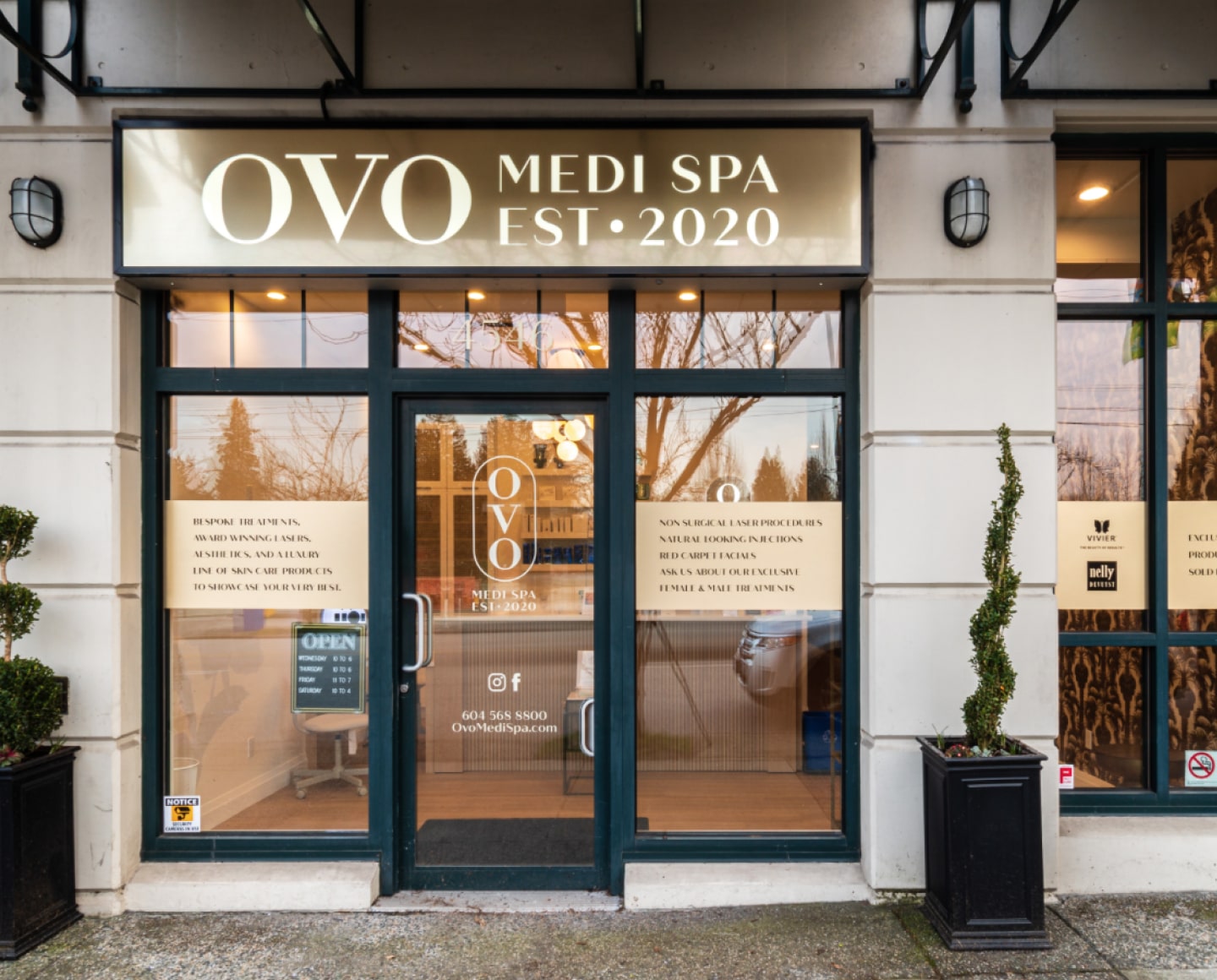
For Consultation.
Do You Have Any Questions About Treatments? Our team will contact you to set up a complimentary consultation.
Call us 604.568.8800 orEmail to Service@OvoMediSpa.com